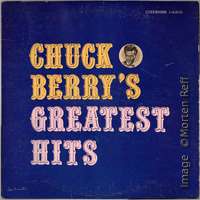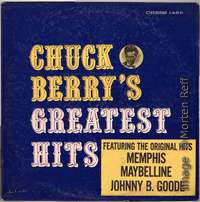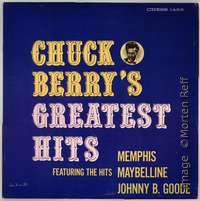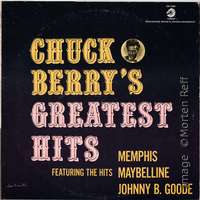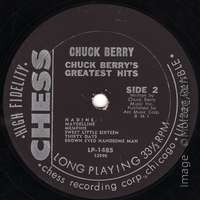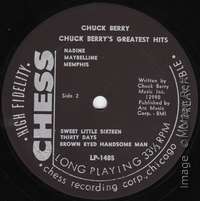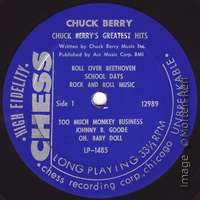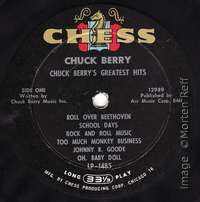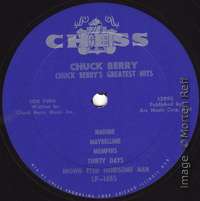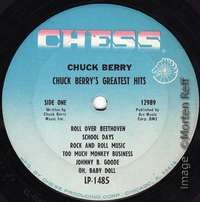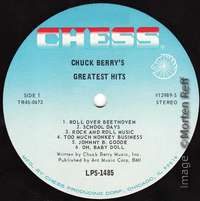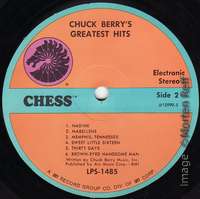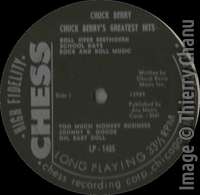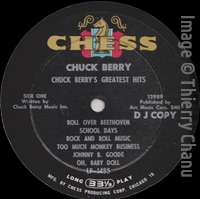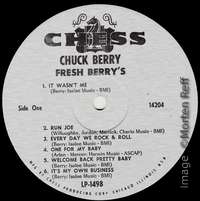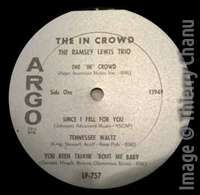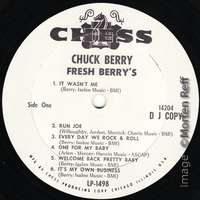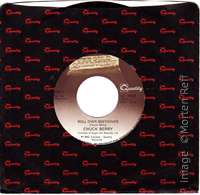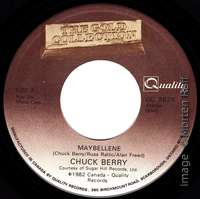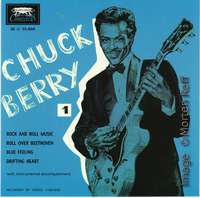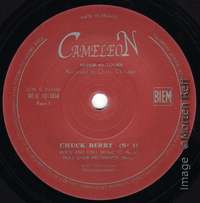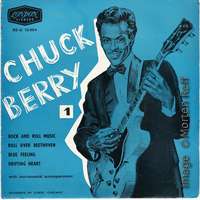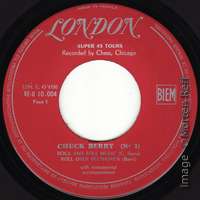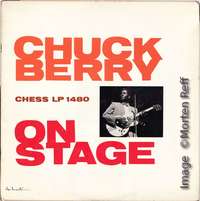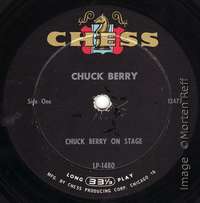Saturday, February 20. 2016
Sheik of Chicago - new CD presents unreleased Chuck Berry material
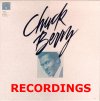
Chuck Berry - The Sheik of Chicago (Smashing Pumpkin Records PMK-1126, 2016) comes in a cheap printed cardboard sleeve which claims to be printed in the E.U.
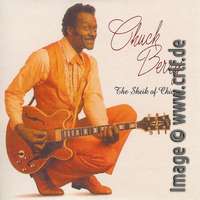
The CD has a playing time of almost 80 minutes consisting of a complete 1988 concert, segments from a 1981 concert, three nice short spots, and a tribute song to Chuck Berry by Joe Stampley.
The 1988 concert was recorded on New Year's Evening at the Palladium Theater in New York City. This concert had been broadcast through various U.S. radio stations and therefore this is a high-quality professional recording. The recording has been known from both audience tapes and more-or-less privately made bootleg CDs for a long time. One of these called Live at the Palladium even uses the same cover image.
While it's a high-quality recording, the performance is everything but high-quality. As he did for most of his career, Berry again uses a band he obviously has never seen before. Bass and rhythm guitar are inaudible, piano and drums are just bad. Chuck's daughter Ingrid helps out with harmonica and second vocal on a few numbers. She even gets to sing lead vocal on two blues numbers like we know from other concert recordings. All in all this concert is certainly not something you want to buy this CD for.
Following the 1988 concert are segments from a 1981 concert recorded in Reseda, California. This is much better but only 12 minutes long. Berry collectors and readers of this site know this performance for a long time. It has never been officially released for public sale. But it exists on Vinyl. These three songs have been included on a LP record sent by Westwood One to radio stations nation-wide to be broadcast as part of their In Concert radio series. Here it has been mastered digitally very well without any crackles and it's nice to have on CD now.
The first part of the former paragraph also holds for the next track. Berry's 20-seconds radio spot for the YMCA as recorded in 1967 was available on Vinyl before and has been discussed in detail on this site's section on Radio Station and Promotional Records. Here however, the transfer to CD did not go well. There are crackles, the beginning is fuzzy, and the overall sound quality is bad. However, as this recording is very rare we must be glad to be able to listen to it at all.
Jumping from 1988 to 1981 to 1967 next are two Chuck Berry recordings made in 2004. Both are speech recordings Chuck Berry did for Independence Air. The airline company Independence Air started flying in 2004 and filed bankruptcy in 2005, thus not being too successful. Besides trying to be cheap (always not a good idea) they also tried to be funny. This included that the in-flight safety announcements were spoken by comedians and other celebrities (see this old press-release).
Chuck Berry's safety announcements, to be used on their Bombardier CRJ200 (CL-65) jets, are spoken over a rock'n'roll instrumental (non-Berry). In 2004 you could download all the safety announcements from the flyi.com website. If you didn't, you now find it here on this new CD.
In addition the Pumpkin CD also includes a 30-seconds radio (?) commercial for Independence Air. In fact this is the only recording from this CD I did not know of and had before. I have not been able to find out where this spot was used and how it was distributed in 2004.
The last and 22nd track of this new CD is not a Chuck Berry recording at all. This is the song Sheik of Chicago, released in 1976 by Joe Stampley on EPIC. This Berry tribute is certainly one of the better ones and even made it to Billboard's Country Top 100.
If you are wondering about the nice and professional looking cover image, this has been cut from a contemporary (i.e. 1988) advert for Christian Brother's Brandy displaying Berry (click to enlarge).
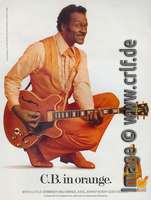
Overall this is not necessary a CD we have been waiting for. It does include some rarities though. Thus if you don't have the radio station albums and the Independent Air MP3s, get yourself a copy.
Friday, February 19. 2016
Cover and label variants of Chess LP-1485 Greatest Hits - Update
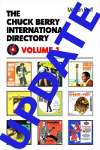
CBID is the Chuck Berry International Directory, a 2.200 page pile of Chuck Berry records information published in four volumes between 2008 and 2013. For details see the bibliography section of this site.
CBID is never complete as new records and CDs appear and some old rarities are discovered. This section presents interesting additions and corrections to CBID.
Today: After we have seen that there were three different versions of the cover of Chess LP-1480 Chuck Berry On Stage it is time to explain that the same variants (initial print, sticker, and final print) can also be found with Chess LP-1485 Chuck Berry's Greatest Hits.
USA
CHUCK BERRY'S GREATEST HITS
Chess LP-1485 • April 1964
This is another of those Berry LPs that has come out with countless of label variants, 8 to be exact, and three different front covers, four if you count the el.stereo one numbered LPS-1485. The first cover didnât have the titles in black on a yellow sticker or printed in yellow in the bottom right-hand corner (see images). And itâs not easy to tell for sure which label was the first, but I would guess it was the old black label with the vertical silver Chess logo (again see all the various images).
And it was also the first occasion that âMaybelleneâ was spelt with an âiâ. And take notice of the different spelling, Featuring the original hits on the sticker, contra the later printed version Featuring the hits.
Here are the four covers of Chess LP-1485. As with all images on this site you can enlarge it by clicking.
And here's a selection of labels I have found with this Greatest Hits album.
Reader Thierry Chanu added two more images: Here's another minor variant of the label plus the original DJ COPY label. As with the On Stage album, the very first records produced and sent to Deejays came in the non-sticker sleeve and had the multi-color label.
Thursday, February 18. 2016
CBID - Chess LP-1498 in silver - explained

He wrote:
A couple of weeks ago I bought a copy of this well-known album having a label I have never seen. Itâs a silver Chess label. I have not seen any other Berry LPs on Chess with this kind of label colour. The copy I got is the mono issue. The question is, was it also available as a stereo issue?
Reader Thierry Chanu was able to explain this unusual label:
This is one of the rarest original US issues ....... only four copies known!!!
It is the first US "DJ COPY" for this record. If you look at the label carefully, especially the side one, (use daylight and/or clean glasses) you will notice the "DJ COPY" writing.
CHESS seems to have used this bad silver paper in 1965 very briefly. Here's the label of a Ramsey Lewis Trio album on ARGO.
And to answer Morten's question: There is no stereo issue for this silver label. The company's DJ COPY/WLP records were only in mono at this time.
Morten agreed. When you look very closely at the label you may see the text DJ COPY stamped below the matrix number. Here is a detail of the silver label as well as the full standard white-label promo (WLP) DJ copy of this album.
When asked how he knows of only four copies of the silver label album, Thierry told me that this is from his own experience monitoring record offers for more than thirty years. He has seen this silver label copy offered only four times so far, one being Morten's.
Thanks, Thierry!
Wednesday, January 13. 2016
Fresh Berry Information
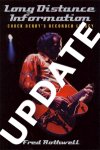
Deep Feeling / School Day session
Close listening and playing the songs at double speed has revealed that there is no bass on Deep Feeling or School Day. Instead, there are two guitars on the recordings, the second being Hubert Sumlin playing rhythm guitar beneath Berry's lead fills. As previously noted there is no bass on the two takes of La Juanda but the bass is back, played by Willie Dixon, on Blue Feeling (and the slowed down version of the tune, Low Feeling)
Sweet Little Sixteen
The version of Sweet Little Sixteen on The Chess Box (CH6-80001), despite what the box-set notes tell us, is not the speeded up version released as the single Chess 1683 but is take 14 before it was tweaked to make the single sound brighter and the vocals higher.
Vacation Time
Arne points out that Vacation Time on the Hip-O Select B0009473-02 box-set is preceded by a studio announcement '14A remake of 21' and not 13A as listed in the discography. However, listening yet again to the studio tapes there is a version of Vacation Time preceded by the following studio dialogue 'A remake of 21. I hope this god damn thing sells records Chuck, it's cost us a fortune. Here we go 13A'. I thought this was the issued version of Vacation Time but can only conclude there was a further take (14A) which became the issued cut. I believe that where an A appears in the take number, this indicates an overdubbed cut where the basic track is enhanced generally by additional guitar but sometime additional vocals. The differences between these takes can be very slight and I guess this is a case in point.
Too Pooped To Pop
Arne points out that there is a sax present on Take 4A of Too Pooped To Pop, issued on the Hip-O Select B0009473-02 box-set, as well as on the Chess 1747 single cut. On checking the studio tape again I can confirm that sax is present on all the takes. Of the 13 takes only 4 are complete takes (4A, 8A and 9A plus the master take, the number of which is unknown). Again, this is an A take overdub session with identical instrumental backing, including the backing vocals, but with variations in Chuck's overdubbed lead vocals.
Brown Eyed Handsome Man
Again Arne spots that on the August 3 1961 instrumental version of Brown Eyed Handsome Man tenor saxes are present. This, in effect, means that the saxes are present on all the cuts at this session. The backing track for both the instrumental and vocal versions is identical with just the guitar overdub substituted for Chucks vocal on the former.
The Promised Land session
There was an error regarding the line-up for this session. The PDF lists Ellis 'Lafayette' Leake and/or unknown: guitar/piano when it should be Ellis 'Lafayette' Leake and/or unknown: piano, unknown: guitar. The and/or regarding the pianist comes from an eye witness report by Guy Stevens in Jazzbeat magazine #4 dated April 1964 in which he says Leake had to leave the session halfway through and was replaced by a young studio pianist who may or may not have been Paul Williams who played on Chuck's following session a month later.
Many thanks Arne, keep 'em coming!
Sunday, December 20. 2015
CBID - Chess LP-1498 in silver - and another Canadian re-issue

CBID is never complete as new records and CDs appear and some old rarities are discovered. This section presents interesting additions and corrections to CBID.
Today: a silver label of Fresh Berry's plus another Canadian re-issue
USA
FRESH BERRY'S
Chess LP-1498 (mono) LPS-1498 (stereo) ? November 1965
A couple of weeks ago I bought a copy of this well-known album having a label I have never seen. Itâs a silver Chess label. I have not seen any other Berry LPs on Chess with this kind of label colour. The copy I got is the mono issue. The question is, was it also available as a stereo issue?
CANADA
Roll Over Beethoven / Maybellene
Quality Gold Collection GC-382X ? 1986
Refering to page 1993 regarding especially the year of release, as the label on the above single also says 1982.
Monday, October 19. 2015
Chuck Berry Rarity Discovered: 1986 Live Recordings on a 1992 Keith Richards Bootleg

It was kind of a sensation when in 2012 Morten Reff found a 1977 record containing recordings not included in Fred's book. And so is what I discovered some weeks ago:
I found a 1986 recording of Chuck Berry which was released on CD in 1992. And which was not in Fred's book. And not known to me or the other Berry collectors.
The CD is not an official one but a bootleg, though factory-produced. While the front cover says "I've been loving you too long", according to the back cover and the CD print this bootleg is called "Bloody Red Rooster". The artist is Rolling Stones guitarist Keith Richards playing with other artists such as Berry or Jerry Lee Lewis. The recordings have been taken from various shows.
Two songs feature Richards on guitar with Chuck Berry on vocals. They are named "Johnny Be Good" and "I'm Gonna Wrong" in the track listing, while the correct titles are "Johnny B. Goode" and "It Hurts Me Too".
The Berry recordings stem from the opening concert of the Chicago Annual Blues Festival of June 6th, 1986. This was one of the rare occasions where Berry was backed by a really good band consisting of Matt 'Guitar' Murphy, Lafayette Leake on piano, Thomas 'Tiaz' Palmer on bass and probably Casey Jones on drums. All of them were well-known Chicago Blues men. Ingrid Berry helped out singing second voice on "Baby What You Want Me To Do" and Keith Richards stepped in for the last four songs using a borrowed guitar (read story here, appr. 3/4 down the page). An audience tape of the show exists. It has poor quality, unfortunately. Likewise the two excerpts from the show included on this bootleg are of very low sound quality.
The bootleg claims that it has been released on the Bad Girl Songs label with catalogue number CDJ3, made in Italy 1992. As with all bootlegs, this may be correct - or not. Since we have no better information, we have to file this release under 1992, though.
The images show the front cover, back cover and label of the CD.
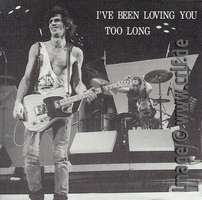
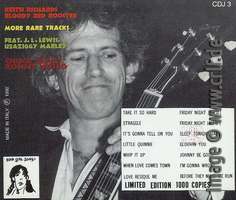
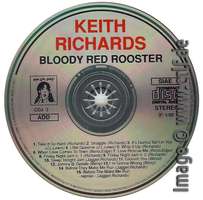
Many thanks to atsu-y and Fred Rothwell for help with this discovery and the corresponding research thereon.
Tuesday, October 13. 2015
The Chuck Berry Vinyl Bootlegs, Vol. 4: Telecasts
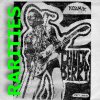
This series of articles is going to describe the Chuck Berry vinyl bootlegs released in the 1970's and 1980's. For any record collector these items are important to know of, even though you don't necessarily need to have them. Omitted from all the usual discographies, information about these records is next to void. Given the secret nature of the bootlegger business there are no exact dates, numbers, or origins. I have tried to collect this information from various sources and mostly from my own collection of records. If you can add anything of worth to the information given here, I'd be glad to know!
This is the fourth part of this series and it covers a record which isn't really a Chuck Berry bootleg.
John Lennon (featuring Yoko Ono & Chuck Berry) - Telecasts - Trade Mark of Quality 71046 (and multiple other labels/numbers)
Of all bootleg records containing unreleased Chuck Berry recordings, this one is probably the best-sold and the one of which the most variants exist. This is because it's not a Chuck Berry bootleg at all. Telecasts is a John Lennon bootleg, but it contains two recordings from the Mike Douglas TV show of February 3rd, 1972. In this show, co-hosted by Lennon, the ex-Beatle invited Berry as a guest performer. Two songs were recorded, Lennon and Berry singing duets backed by Elephant's Memory and Lennon's wife Yoko Ono: Memphis, Tennessee and Johnny B. Goode. Further segments from the show such as an interview with Berry and a cooking scene did not make it to this bootleg.
During research for this article, I learned a lot about bootleg creation in the 1970's. I strongly suggest you take some time to read the excellent blog The Amazing Kornyfone Label. If you follow closely the stories of Ken Douglas, one of the most famous early bootleggers, you'll learn that research is almost impossible. They never thought about getting their acts organized in any business sense. Which makes it more or less arbitrary how the records looked like. The color of the vinyl, for instance, was more or less random. The record pressing company just used what was lying around. Even in the same production run multiple colors were used. The same with labels or covers: any color, any print. Early bootlegs had their name placed on blank covers using a rubber stamp, but if there wasn't enough time, only some were stamped, others not. Due to this, bootlegs from Ken's Trade Mark Of Quality label (and others) exist in dozens of variants and no-one can tell which ones were produced when or in which quantity. Here is what I think might be the most probable history of this Berry bootleg.
It seems that the very first version of this bootleg was produced by the legendary Los Angeles-based bootleg label "Trade Mark Of Quality". The exact date is not known, but is must have been by the end of 1972. At that time the operation was run by Ken together with Dub Taylor. They used a so-called "Farm Pig" logo on stickers, inserts, and (sometimes) labels. The initial release had a catalogue number of TMQ 71046 which was printed on an insert (xeroxed on color paper). It came in a white or colored cover with or without a rubber-stamp reading "John Lennon (featuring Yoko Ono & Chuck Berry) Telecasts". Labels seem to contain the Farm Pig logo, but also other labels exist. Note that TMQ 71046 has been copied in later years with no or little difference. This means there are bootleg copies of this bootleg.
This might be the original version of TMQ 71046:
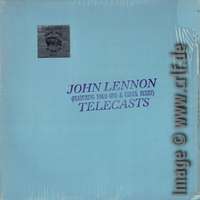
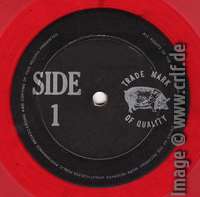
The matrix number etched in the dead wax of TMQ 71046 reads JL-517 A/B. It's not quite clear what this number stands for. JL of course is short for John Lennon. 517 seems to be some internal numbering at TMQ. There is for instance a Bob Dylan bootleg numbered BD-516.
The letter-sized photo-copied insert on colored paper contains poor quality photos from the shows including Berry and Lennon performing together.
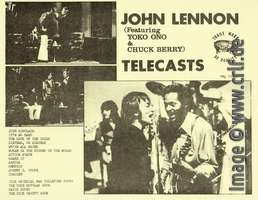
The tracks on this record are as follows (spelling as on the sheet):
Side 1
- JOHN SINCLAIR
- IT'S SO HARD
- THE LUCK OF THE IRISH
- SISTERS, OH SISTERS
- WE'RE ALL WATER
- WOMAN IS THE NIGGER OF THE WORLD
Side 2
- ATTICA STATE
- SHAKE IT
- SAKURA
- MEMPHIS
- JOHNNY B. GOODE
- IMAGINE
In addition the sheet tells:
THIS MATERIAL WAS COLLECTED FROM:
THE MIKE DOUGLAS SHOW
DAVID FROST
THE DICK CAVETT SHOW
Shortly after the initial release of TMQ 71046 the owners of the label (if you can call them 'owners') split and formed separated bootleg labels. Ken Douglas continued using the Trade Mark Of Quality name. These second version records show a different TMQ logo, though. While the original label had a so-called "Farm Pig" logo, the second version uses the so-called "Smoking Pig" label. Douglas re-used the original tapes to produce his own TMOQ records.
The second variant of Telecasts has the TMQ number 1834 which is etched in the dead wax. Thus a different matrix was used. It came in completely white covers. Both the insert and the labels show the Smoking Pig logo.
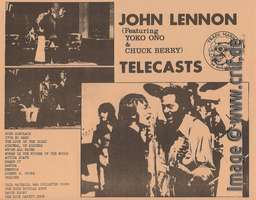
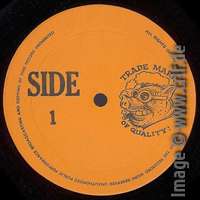
Concurrently with the TMQ release(s) or not much later (appr. 1973) another variant of this bootleg has been produced from yet another matrix. This time the etching reads WEC-3711. The "company" is known as Contraband Music but this name doesn't appear on cover or label. The cover is blank with a full-size insert in brown on white. The labels are white with a rubber-stamped A and B.
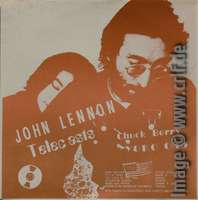
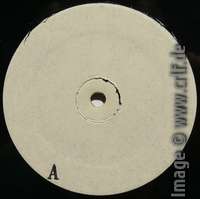
The original TMQ matrix with the etching JL-517 (or copies thereof) has been used very often. This record exists in a multitude of covers and comes with a multitude of labels. Here's one example of a modified insert. This version had plain green labels. This may be a later or even an earlier version. Have a look at Bob's Boots discussion of TMOQ cover and label variants of a Bob Dylan bootleg.
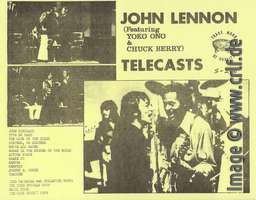
For more variants of JL-517 see images here (Great Live Concerts 6012-4299) and here (Box Top Records). The best known version of JL-517 is the one with the full-color photograph of the bearded Lennon sitting at a piano in front of an audience. This version also has a full-color back cover. It is this cover on which the bootleggers first forgot to list the second track from side 2 "Shake it". The song is only missing from the track listing. On the record it still is. This error has been repeated ever since.
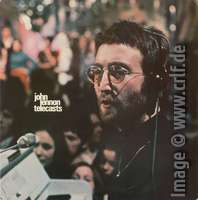
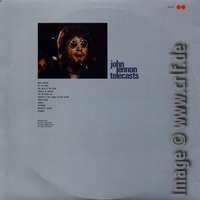
The labels of the photograph version are blank white. Both cover and record have been reproduced often. One version has a dog label (image at discogs here). In addition JL-517 has been used to produce one of the records in two-, three- or even nine-record sets such as John Lennon - Flower and John Lennon - The Plastic Ono Box.
The full-color photo from JL-517 has also been used to produce a picture disk. A picture disk is made out of transparent vinyl with a full-size print in between the two layers for the two sides. One should note that for the picture disk an even different master has been used (probably due to production reasons). The picture disk is etched 4-A and 4AB in the dead wax.
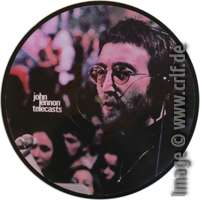
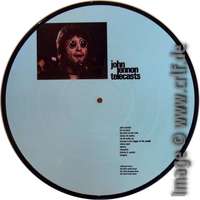
While Telecasts was the first bootleg containing the two Lennon/Berry duets, the same recordings have been used on other, later bootlegs as well. These contain different remaining Lennon recordings, typically other duets with Jimi Hendrix or Elton John. Examples of such bootlegs are the two LP set Working Class Hero (Chet Mar CMR-75, image), the Australian two LP set Stand By Me (Toasted Records TRW-1942, see below), and the single LPs The Joshua Tree Tapes (The Kornyphone Records for the Working Man TKRWM 1803, Johnny B. Goode only, image) and John Lennon with (LSD Record JCJ-37037, again see below).
The Toasted Records cover tells that there's a third duet from the Mike Douglas show (Roll Over Beethoven). This is incorrect, though. There's no Chuck Berry on that recording. Also note the spelling of Chuck on the LSD Record cover.
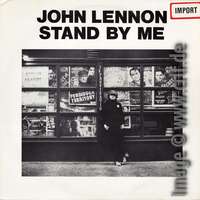
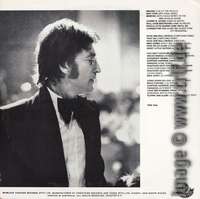
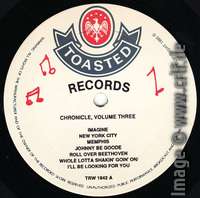
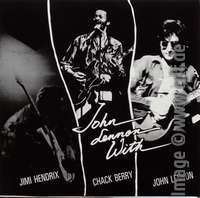
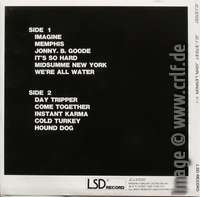
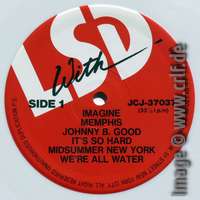
A (probably) legal release of the two songs plus the interview with questions to Berry, Lennon, and Ono was released in 2011 as a three CD set called Chuck Berry in the 1950s (Chrome Dreams CD3CD5073, 2011). You can also buy DVDs containing the complete show.
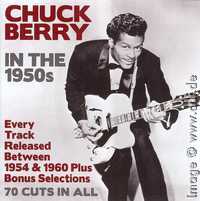
Thanks to Morten Reff for photos of the original TMQ record and the Toasted bootleg. All other images show records from my own collection.
To read the other parts of this series on Chuck Berry vinyl bootlegs, click here:
Wednesday, September 30. 2015
The original Annie Lou

I've just found the original of the song Chuck recorded as 'Annie Lou'. It's a recording from 1940 by Tampa Red called 'Anna Lou Blues' and is the B side of his original 'Don't Lie To Me' so I bet Chuck owned this 78 at some time and both songs stuck in his memory. I previously thought the song was a cover of 'Anna Lee Blues' by Robert Nighthawk but it seems Nighthawk based his song on Tampa's original.
TITLE: Anna Lou Blues
MATRIX NO.: -44977-1
SINGER: Tampa Red (Hudson Woodbridge / Hudson Whittaker), Blind John Davis, piano; Tampa Red, electric guitar, unknown sb
COMPOSER(S): Tampa Red
DATE OF REC.: May 10, 1940
ORIGINAL ISSUE(S): Bluebird B8654
REISSUE(S): RCA double LP set, "Tampa Red Guitar Wizard."
Thursday, September 17. 2015
New And Verified Information About Chuck Berry's 1960's Recording Sessions

The 17.2.1959 Session
The only variation is that Jasper Thomas is confirmed as the drummer instead of Fred Below
February 17, 1959; Ter-Mar Records Studio, 2120 South Michigan Avenue, Chicago, Illinois
Chuck Berry: vocal/guitar; Willie Dixon: double bass; Jasper Thomas: drums; Johnnie Johnson: piano; Harvey & The Moonglows (Chuck Barksdale, Harvey Fuqua, Marvin Gaye, James Nolan, Reese Palmer, Chester Simmons) and Etta James: vocal group
The 1960 Sessions
The discography previously listed all the 21 songs recorded in 1960 in two extensive sessions. The recording contract details show two sessions in March and April with only a proportion of the titles listed. The 1960 work has therefore been re-cast in four sessions, two as per the contract details and the other songs divided into two as per the matrix numbers.
The 12.2.1960 Session
The personnel is as previously listed but with only 'Drifting Blues', 'I Got To Find My Baby' and 'Don't You Lie To Me' attributed to the date. This session is not included in the contract session details.
February 12, 1960 Ter-Mar Records Studio, 2120 South Michigan Avenue, Chicago, Illinois
Chuck Berry: vocal/guitar; Matthew T Murphy: guitar; Reggie Boyd: electric bass; Odie Payne: drums; Ellis 'Lafayette' Leake: piano; Leroy C. Davis: tenor saxophone; unknown tenor saxophone; unknown vocal group ('Drifting Blues' only)
The 15.2.1960 Session
Again personnel is as before but with 'Diploma For Two', 'Little Star', 'The Way It Was Before' and 'Away From You' attributed to the date. The vocal group overdubbing was probably done in April hence the non-consequential matrix numbers. This session is not included in the contract session details.
Possibly February 15, 1960; Ter-Mar Records Studio, 2120 South Michigan Avenue, Chicago, Illinois
Chuck Berry: vocal/guitar; Reggie Boyd: electric bass ; Odie Payne: drums; Ellis 'Lafayette' Leake: piano; Leroy C. Davis: tenor saxophone; unknown tenor saxophone; overdubbed unknown vocal group.
The 29.3.1960 Session
The contract information confirms that the previously used session details are correct except the vocal group clearly heard on 'Jaguar And Thunderbird' is not listed. Titles recorded were 'Worried Life Blues', 'Our Little Rendezvous', 'Bye Bye Johnny', 'Run Around' and 'Jaguar And Thunderbird'
March 29, 1960; Ter-Mar Records Studio, 2120 South Michigan Avenue, Chicago, Illinois
Chuck Berry: vocal/guitar/steel guitar ('Run Around' only); Matthew T Murphy: guitar; Willie Dixon: double bass; Odie Payne: drums; Ellis 'Lafayette' Leake: piano; unknown vocal group ('Jaguar And Thunderbird' only)
The 12.4.1960 Session
The contract information confirms that the previous session details are correct except for the addition of Walter Cole who is listed but with no instrument attributed to him. Walter Cole (aka Walter Champion, aka Walter "Chippy" Cole), was a bass player who recorded with other artists in Chicago in the early sixties and later joined the Treniers. Willie Dixon is also listed on the session so bass playing duties must have been split. Titles recorded were 'Down The Road Apiece', 'Confessin' The Blues', 'Sweet Sixteen', 'Thirteen Question Method', 'Stop And Listen', 'I Still Got The Blues', 'I'm Just A Lucky So And So', 'Mad Lad' and 'Cryin' Steel'. 'Thirteen Question Method' is not listed in the contract. The female vocalist on 'Stop And Listen' is not listed in the contract.
April 12, 1960; Ter-Mar Records Studio, 2120 South Michigan Avenue, Chicago, Illinois
Chuck Berry: vocal/guitar/steel guitar ('Mad Lad' and 'Cryin' Steel'); Matthew T Murphy: guitar (except 'Mad Lad' and 'Cryin' Steel'); Willie Dixon; double bass; Walter Champion Cole: double bass; Odie Payne: drums; Ellis 'Lafayette' Leake: piano; unknown female vocal ('Stop And Listen' only)
The 19.1.1961 Session
The contract information lists Philip Thomas on drums instead of Ebby Hardy or Jasper Thomas as previously listed. Ellis 'Lafayette' Leake is the pianist rather than the previously noted Johnnie Johnson.
January 19, 1961; Ter-Mar Recording Studio, 2120 South Michigan Avenue, Chicago, Illinois
Chuck Berry: vocal/guitar; Reggie Boyd electric bass: Philip Thomas: drums; Ellis 'Lafayette' Leake: piano
The 3.8.1961 Session
The contract information lists Abe Locke and John W Jackson as the saxophonists in place of the previously noted Leroy C Davis. Abe Locke was a well respected musician best known as a member of Howlin' Wolf's band. He recorded with Wolf, Buddy Guy and Eddy Clearwater amongst many Chicago blues artists. John Jackson was a tenor player who also recorded with blues harpists, James Cotton and Little Mac Simmons. Martha Berry is not listed in the contract details, possibly because she was not a musicians union member. The matrix numbers are attributed differently on the contract but in the discographies I use the numbers as printed on the Chess singles. 'Come On' was initially titled 'Everything Is Wrong'.
August 3, 1961; Ter-Mar Recording Studio, 2120 South Michigan Avenue, Chicago, Illinois
Chuck Berry: vocal/guitar/overdubbed guitar ('Come On' and 'All Aboard' only); Matthew T Murphy: guitar; Reggie Boyd: electric bass; Philip Thomas, drums; Ellis 'Lafayette' Leake: piano; Abe Locke and John W Jackson: tenor saxophones (except instrumental version of 'Brown Eyed Handsome Man'); Martha Berry: second vocal ('Come On', 'Man & The Donkey' and 'Go Go Go' only)
The 7, 8 & 9.1.1964 Session
This extended session was previously listed as 15 & 16 November 1963 with 14 January 1964 given as an alternative date. The contract information confirms the January 7, 8 & 9 1964 dates with the 14 Jan date being the date the contract was officially signed. The contract confirms Louis E Satterfield was on bass instead of the previously listed Reggie Boyd and that George Patterson and Rubin Cooper Jr played the saxes, not James Robinson and Leroy C Davis, as previously noted. Strangely no drummer or pianist is listed in the contract information. Louis Satterfield went on to become a renowned musician (bass and trombone) playing with dozens of artists in many genres of music including the infamous 'Electric Mud' and 'Electric Wolf' albums. George Patterson and Rubin Cooper went on to record with Fontella Bass amongst many other artists..
January 7, 8 & 9, 1964; Ter-Mar Recording Studio, 2120 South Michigan Avenue, Chicago, Illinois
Chuck Berry: vocal/guitar/overdubbed guitar ('The Things I Used To Do' only)/double-tracked vocal ('You Never Can Tell' and 'Lonely All The Time' only); Louis E Satterfield: electric bass; Odie Payne: drums; Johnnie Johnson: piano; George Earl Patterson and Rubin Cooper Jr: tenor & baritone saxophones (except 'The Things I Used To Do' and 'The Little Girl From Central')
The 16.12.1964 Session
The contract details show no significant variations to the previously published information. There is a clear mistake in the matrix numbers with matrix 13627 used twice. So the numbers from the Chess files reproduced in The Chess labels: A Discography, compiled by Michel Ruppli are preferred. The backing band was that of Jules Blattner, a solid Berry fan who cut a spirited version of 'No Money Down' and the Berry-like 'Crazy Stockings'.
December 16, 1964; Ter-Mar Recording Studio, 2120 South Michigan Avenue, Chicago, Illinois
Chuck Berry: vocal/guitar/overdubbed guitar ('Dear Dad' and 'I Want To Be Your Driver' only); Jules M Blattner: guitar; William L Bixler: bass; Howard Jones: drums; Brian J Hamilton: tenor saxophone (except 'His Daughter Caroline', 'Dear Dad' and 'I Want To Be Your Driver').
The 1, 2 & 3.9.1965 Sessions
The contract information shows a different group of musicians to that previously published. Instead of Chuck Bernard, bass, Jasper Thomas, drums and Johnnie Johnson, piano the line-up is Bryce Roberson, Walter Ben Ruffin and Sonny Thompson with Mike Bloomfield and Paul Butterfield overdubbed at a later date so not listed in the contract. The most significant musician is Sonny Thomson, pianist, songwriter, band-leader and producer with an extensive discography of his own but also renowned for his work as a producer for King Records and his association with blues guitarist Freddie King. Bass player Bryce Roberson was also a studio engineer at Chess and recorded with several Chess notables including Muddy Waters, Howling Wolf, Fontella Bass and Billy Stewart. The song 'My Mustang Ford' is not listed in recording contract details. Matrix 14156 (originally allocated to the unissued 'Lovin' You In Vain') was later re-allocated to 'My Mustang Ford' which could indicate that 'Mustang' was recorded at a separate date. The 2 September date is repeated for the 3 September which is wrong if the matrix numbers are followed. There is also some reallocation of matrix numbers. Matrix 14163 originally attributed to 'Untitled Instrumental' was reallocated to 'Welcome Back Pretty Baby' and matrix 14162 attributed to 'Forgive Me' (unissued) was reallocated to 'Right Off Rampart Street' which is not mentioned in the contract.
September 1, 1965; Ter-Mar Recording Studio, 2120 South Michigan Avenue, Chicago, Illinois
Chuck Berry: vocal/guitar/overdubbed guitar ('My Mustang Ford' only); Bryce Roberson: bass; Walter Ben Ruffin: drums; Sonny Thompson: piano
September 2, 1965; Ter-Mar Recording Studio, 2120 South Michigan Avenue, Chicago, Illinois
Chuck Berry: vocal/guitar; Bryce Roberson: bass; Walter Ben Ruffin: drums; Alfonso 'Sonny' Thompson: piano
September 3, 1965; Ter-Mar Recording Studio, 2120 South Michigan Avenue, Chicago, Illinois
Chuck Berry: vocal/guitar/overdubbed guitar ('Ain't That Just Like A Woman' only); Mike Bloomfield: overdubbed guitar ('It Wasn't Me' only); Bryce Roberson: bass; Walter Ben Ruffin: drums; Alfonso 'Sonny' Thompson: piano; Paul Butterfield: overdubbed harmonica ('It Wasn't Me' and 'Sad Day, Long Night' only)
The 13.4.1966 Session
The previously listed trio of Bernard, Thomas and Johnson are yet again replaced by Louis Satterfield on bass, Sonny Thompson on keyboards and, this time, Maurice White on drums. They are further augmented by two guitarists Pete Cosey and Bryce Roberson with unknown saxes overdubbed later so not mentioned in the contract details. Maurice White was a renown session drummer at Chess and Vee Jay in Chicago who later founded and fronted Earth, Wind & Fire. Likewise Pete Cosey was a well respected guitarist cutting with other artist at Chess, before moving into the jazz field, recording with Miles Davis and Herbie Hancock.
April 13, 1966; Ter-Mar Recording Studio, 2120 South Michigan Avenue, Chicago, Illinois
Chuck Berry: vocal/guitar; Pete Cosey: guitar; Bryce Roberson: guitar; Louis E Satterfield: electric bass; Maurice White: drums; Sonny Thompson: piano (on 'Viva (Viva) Rock And Roll' and 'Lonely School Days') and organ (on 'Ramona, Say Yes' and 'His Daughter Caroline'); unknown: overdubbed saxes (on the LP version of 'Ramona, Say Yes')
The 20 & 21. 9.1966 Sessions
These were the first recording sessions Chuck made for Mercury Records and the contract information lists no variation in the session personnel from earlier discographies. Quincy Macon is listed as O T Macon in error. On the second session matrix 38880 is designated to 'Mother's Rule' in the recording contract details which is an alternative title for 'Laugh And Cry' which was re-designated with the matrix 39069. The last five titles of the second session are not listed in the recording contract details but are listed as recorded on this date in Berry's biography. Long-time musical associates of Berry, Johnnie Johnson and Ebbie Hardy are back in the fold together with three newcomers. Sax-man Big Joe Enlow (or Enloe) recorded later with St Louis blues-man Tommy Bankhead, but it seems that these were the only recordings made by Quincy Macon and Forrest Frierson.
September 20, 1966; Technisonic Studio, 1201 South Brentwood Avenue, Clayton, Missouri
Chuck Berry: vocal/guitar; Quincy Macon: guitar; Forrest Frierson: bass; Ebbie Hardy: drums; unknown: tambourine ('My Tambourine' only); Johnnie Johnson: piano/organ ('Campus Cookie' only); Carey 'Big Joe' Enlow: tenor sax (except 'Laugh And Cry')
September 21, 1966; Technisonic Studio, 1201 South Brentwood Avenue , Clayton, Missouri
Chuck Berry: vocal/guitar; Quincy Macon: guitar; Forrest Frierson: bass; Ebbie Hardy: drums; Johnnie Johnson electric piano/organ ('Maybelline' only); Carey 'Big Joe' Enlow: tenor saxophone ('Johnny B Goode' and 'Rock 'n' Roll Music' only)
The 26 & 27. 10.1966 Sessions
The contract for these two sessions confirms the information in the discography is correct. The new musician, drummer Eugene Washington was a long-standing member of Ike Turner's Kings Of Rhythm who recorded extensively with Ike and his numerous vocalists between 1955- 1958.
October 26 & 27, 1966; Technisonic Studio, 1201 South Brentwood Avenue, Clayton, Missouri
Chuck Berry: vocal/guitar; Forrest Frierson: bass; Eugene Washington: drums; Johnnie Johnson: electric piano
Wednesday, September 16. 2015
CBID - A French London Cameleon

CBID is never complete as new records and CDs appear and some old rarities are discovered. This section presents interesting additions and corrections to CBID.
Today: A high-quality re-issue of a French EP.
FRANCE
CHUCK BERRY
Cameleon CAME-20 ? 2015
Rock And Roll Music / Roll Over Beethoven / Blue Feeling (instr) / Drifting Heart
A reissue and a true copy of the rare EP from France in 1958, London RE-U-10.004 (page 298). Itâs been popular now to reissue original LPs as we have got many from the old US Chess catalog. Itâs interesting to notice that they also have done it in France with this EP. Because to find a copy of this London EP today is as difficult as to search for a needle in the haystack, and the price will be skyhigh, weâre talking at least 1000,- Euro or up.
Here's the cover and label of the original EP so you don't confuse the two.
Monday, September 14. 2015
The Chuck Berry Vinyl Bootlegs, Vol. 2: Six Two Five

This series of articles is going to describe the Chuck Berry vinyl bootlegs released in the 1970's and 1980's. For any record collector these items are important to know of, even though you don't necessarily need to have them. Omitted from all the usual discographies, information about these records is next to void. Given the secret nature of the bootlegger business there are no exact dates, numbers, or origins. I have tried to collect this information from various sources and mostly from my own collection of records. If you can add anything of worth to the information given here, I'd be glad to know!
This is the second part of this series and it covers a typical kind of bootleg record: a live show recording.
Chuck Berry - Six Two Five - Driving Wheel LP 1001 / Maybelline Records MBL 676
As typical for many bootlegs, the Six Two Five bootleg origins from a live show. Here it's Berry's concert for British Broadcasting BBC held at the BBC TV Theatre, Shepherds Bush Green, London, UK on March 29th 1972. Most concert bootlegs stem from professional recordings made during the concert, either cut directly from the mix or soundboard or produced for radio or TV broadcast. We don't know the exact origin of this concert recording, but the quality is high and the contents is exactly that of the original 45 minutes TV broadcast by the BBC. Thus it may have been cut from the TV transmission or directly from the edited BBC tape.
Two vinyl variants and one professionally made CD of Six Two Five exist. All show the exact same black&white photo of Berry shot from a TV screen. Also the font and placement of artist name and record title are the same. The three variants differ in the print below the photo.
Variant 1 reads Driving Wheel 1001 in the lower right corner. The lower left corner displays the Driving Wheel logo. The cover itself is blank white, the cover image is printed on a yellowish paper almost the size of the cover. The paper is glued onto the front cover.
It is not clear if the sheet containing explanations and track listing was separated from the cover initially. My copy has this sheet cut to 163x170mm and glued to the back of the cover. It has some sentences about the BBC show including the very interesting telling of a list of songs played but not broadcast. This list can only come from either the BBC themselves or from someone who was present during the original concert. Besides this, the back sheet names the album An 'S F T F' Production and lists five 'names' for which credit's due.
In addition to the sheet there's also a blue number stamped on the back cover. I don't know if this is the individual copy's number or the produced quantity, probably the former. Mine reads 00400.
The tracks on this record are as follows (spelling as on the back sheet):
Side 1
- Roll Over Beethoven
- Sweet Little Sixteen
- Memphis Tennessee
- South of the Border
- Beer Drinking Woman
- Let It Rock
Side 2
- Mean Old World
- Carol
- Liverpool Drive
- Nadine
- Bye Bye Johnny
- Bonsoir Cherie/Johnny B. Goode
While all of the songs as well as Berry's stage banter are very worth listening to, especially because Berry used a band, Rocking Horse, he had practiced with during the week before, the most interesting number is Berry's version of South of the Border, or South of Her Border as Berry puts it. This is the only song from this concert which has been released on an official record: Chess (UK) 45rpm single 6145027.
The Driving Wheel bootleg has a simple label reading only Side One / Side Two and 33 1/3 RPM. As you can see, the record is pressed in a purple-colored vinyl.
An interesting detail is the etching in the dead wax of Driving Wheel LP 1001. It reads DWLP-721-A/B. It is quite probable that 72 refers to the year of production. We'll return to this etching in a minute.
Variant 2 of Six Two Five has almost the exact same cover. The same size front sheet is now printed on white paper. The main difference is that the text Driving Wheel 1001 is missing from the lower right corner. The Driving Wheel logo itself is there, though.
The back cover is blank and to my knowledge there wasn't any insert or back sheet. The track listing is part of the record labels only.
Here you can see that this variant was released as MBL 676 on a label called Maybelline Records. Again the number 676 might point to the date of production.
As I said, it's interesting to look at the etching in the dead wax. On this record it reads DW1001A/B.
This makes it clear that this record was produced using a different, a new master disk. The reference to DW1001 makes me believe that for mastering the Maybelline bootleg they used a copy of the Driving Wheel bootleg as the source - and not the original tape.
In the early 1990's yet another variant of Six Two Five appeared. This time it was a factory produced CD. The front cover still looks the same. Only the lower parts are cut off and a label name ARCHIVIO is inserted. The catalog number is given as ARC 001. According to the print on the CD and a red stamp on the back cover this CD was Made in Italy 1991. As with all the information printed on bootlegs this is not to be taken too seriously.
By listening to the CD it becomes very probable that also the CD master was created from one of the two vinyl editions.
To read the other parts of this series on Chuck Berry vinyl bootlegs, click here:
Friday, September 11. 2015
The Chuck Berry Vinyl Bootlegs, Vol. 1: Rare Berries

This series of articles is going to describe the Chuck Berry vinyl bootlegs released in the 1970's and 1980's. For any record collector these items are important to know of, even though you don't necessarily need to have them. Omitted from all the usual discographies, information about these records is next to void. Given the secret nature of the bootlegger business there are no exact dates, numbers, or origins. I have tried to collect this information from various sources and mostly from my own collection of records. If you can add anything of worth to the information given here, I'd be glad to know!
Let's begin this series with the record I use for the thumbnail of the Chuck Berry Rarities section of this blog. This may be the first Chuck Berry vinyl bootleg, or not.
Chuck Berry - Rare Berries - Kozmik KZ-501
As with most of the early bootleg records, Rare Berries did not have a printed cover but instead came in a plain white envelope. Attached were two sheets of paper which are black and white photocopies. All copies of this record I have seen so far have these sheets glued to the two sides of the record cover, so I don't know if they were delivered loosely initially. Both sheets don't have any standard paper size, so it's quite possible that they were already glued on the cover at their initial sale.
The front sheet shows a (poor) photo of Berry. He wears the colorful stage outfit he used to wear by the end of 1972 and early 1973. So this indicates a production date of not earlier than 1972. And probably also not much later as fully printed covers became common with bootlegs in the mid 1970's.
In addition the front sheet (225x292mm) tells the artist name in capital letters, the record name in all lower-case letters, the logo KOZMIK and the record number KZ-501.
The back sheet (207x283mm) repeats label, artist and record name. Next is a sentence explaining the record as "A Limited Edition album, featuring Chuck Berry's most obscure recordings, taken from the outset of his musical career." Following is a track listing and discographical details of the recordings.
The tracks on this record are as follows (spelling as on the back sheet):
Side A
- RUN AROUND
- ROLLI POLLI
- WORRIED LIFE BLUES
- HEY PEDRO
- IT DON'T TAKE BUT A FEW MINUTES
- BLUE FEELING
- SWEET SIXTEEN
Side B
- OUR LITTLE RENDEZVOUS
- DEEP FEELING
- MERRY CHRISTMAS BABY
- INGO
- HOW YOU'VE CHANGED
- BERRY PICKIN'
- BLUES FOR HAWAIIANS
As you can see from the track listing, these are not the usual bootleg recordings. Instead of unreleased studio stuff or obscure live recordings, this album contains nothing more than previously released Chess material, though some of the lesser known. But definitely not 'rare'. All of these recordings could have been found in used-record shops even in the 1970's. No later than with the release of Chuck Berry's Golden Decade Volume 3 in 1974 almost all of these tracks were commercially available even on new records. Therefore I would date the release of Rare Berries to 1972 or 1973.
There are at least two different variants of this bootleg differing by the record label print. This points to at least two production runs.
Variant 1 has green labels. The text is written with a typewriter, the label name is written using a lettering guide. The labels must have been created in haste as they even did not re-type the B side label after mistyping £ for a 5 in the record number. And on Side A they weren't even sure of the (probably conceived) label name: Where the front sheet and Side B spell KOZMIK with a Z, the label of Side A has KOSMIK with an S.
Variant 2 has a much more professional looking multi-colored label. Besides the consequent spelling of KOZMIK it also tells 'Mono', '33 1/3 RPM', 'Jewel Music' as the song publisher, and the standard saying that 'copying of this record is prohibited'. If one wouldn't know better (and would miss the cover), this could be mistaken for a legitimate release. Interesting is the hint to Jewel Music Publishing, Inc. which was Chuck Berry's publisher in the UK at that time. This could point to the origin of this record.
Both variants seem to have been produced using the same master disk. The etching in the dead wax reads 'KZ 501 A/B' on both records.
To read the other parts of this series on Chuck Berry vinyl bootlegs, click here:
Thursday, September 10. 2015
Cover and label variants of Chess LP-1485 Greatest Hits

CBID is never complete as new records and CDs appear and some old rarities are discovered. This section presents interesting additions and corrections to CBID.
Today: After we have seen that there were three different versions of the cover of Chess LP-1480 Chuck Berry On Stage it is time to explain that the same variants (initial print, sticker, and final print) can also be found with Chess LP-1485 Chuck Berry's Greatest Hits.
USA
CHUCK BERRY'S GREATEST HITS
Chess LP-1485 ? April 1964
This is another of those Berry LPs that has come out with countless of label variants, 8 to be exact, and three different front covers, four if you count the el.stereo one numbered LPS-1485. The first cover didnât have the titles in black on a yellow sticker or printed in yellow in the bottom right-hand corner (see images). And itâs not easy to tell for sure which label was the first, but I would guess it was the old black label with the vertical silver Chess logo (again see all the various images).
And it was also the first occasion that âMaybelleneâ was spelt with an âiâ. And take notice of the different spelling, Featuring the original hits on the sticker, contra the later printed version Featuring the hits.
here are the four covers of Chess LP-1485. As with all images on this site you can enlarge it by clicking.
And here's a selection of labels I have found with this Greatest Hits album.
Thursday, September 3. 2015
CBID - The original cover of Chess LP-1480

CBID is never complete as new records and CDs appear and some old rarities are discovered. This section presents interesting additions and corrections to CBID.
Today: As already discussed in some blog posts here, the initial release of Chess LP-1480 was missing from the book - and all other discographies.
USA
CHUCK BERRY ON STAGE
Chess LP-1480 • August 1963
As mentioned on pages 60-61 I said that the original pressing of this LP had a sticker on the front cover. It goes to show that actually the original very first issue of this album didnât have the sticker but came with no titles printed on top. Also the label was the black label with the fancy gold Chess logo across the top (image page 60) and no song titles mentioned. So now finally we have the complete picture of this LP.
Monday, August 10. 2015
Crying Steel's Third Strike - Chuck Berry and Keith Richards live 1986
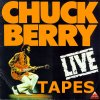
Their first release 'Deliver Me From The Days Of Old' (Crying Steel Records CSR001, 2007) contained all of Berry's Records which I had described as being released on CD or Vinyl before but concurrently being extremely hard to find on CD. This included the Newport 1958 concert which was back then only available in Sweden or the two Japanese concerts which were at that time only available on Vinyl.
While it is doubtful that CSR001 was a legal release, it not only looked like one. It also came with a professional booklet containing many great photos and useful discographical information.
Crying Steel's second release 'Live At Winterland, San Francisco '67' (Crying Steel Records CSR02, 2014) gave us a CD copy of the three 1960s concerts which had been found in the archives of promoter Bill Graham. These had been made available for online listening through the commercial site Wolfgang's Vault, now Concert Vault. I reported on these concert in blog entries here on January 12, 2008 and on October 23, 2009.
Again it is doubtful whether Crying Steel had the rights to publish Graham's recordings of Berry's performances. But it is also not clear whether Concert Vault has the right to broadcast thise in the first place. See this recent article from Billboard.
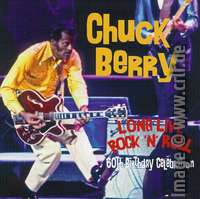
Now I received Crying Steel's third strike: a CD called 'Long Live Rock 'n' Roll - 60th Birthday Celebration' (Crying Steel Records CSR03, 2015). Source for this CD is another concert recording available for listening at concertvault.com
I had reported on the availability of this recording in October last year in this site's chapter on Berry's 60th Birthday Celebrations. This concert was recorded on October 17, 1986 and is the second show from the Fox Theatre, St. Louis used for the preparation of Taylor Hackford's documentary called 'Hail! Hail! Rock 'n' Roll' (released 1987). For all the details on this show read the corresponding chapter of the main site.
The Concert Vault recording of the show is about 85 minutes long. It contains most of the concert including various stage banter and impromptu jamming. To make it fit on a single CD, Crying Steel Records excluded most of the in-between talks/waits as well as some of the instrumental jams. Instead they added one more recording from this show: 'School Day' was the big finale of the show as it can be seen in the movie. It was missing from Concert Vault, though.
As no good quality first-hand recording of this final track was available, the people at Crying Steel copied it from the movie, probably from one of the commercially available DVDs. While doing so, they concurrently also extracted four other live recordings from the movie: 'No Money Down', 'Nadine', 'Almost Grown', and 'No Particular Place To Go'. These had been included in the film, but were recorded during the other of the two shows. Just like the remaining songs from the first show which were used in the film or on the soundtrack album, these audio tracks have been post-produced in Los Angeles. During this post-production some vocal parts were overdubbed. I have not yet had the time to compare the post-produced versions to the original recordings where available.
Together with the original soundtrack album, the Crying Steel CD presents a nice overview of the two Fox Theatre shows. They even added two of the Cosmopolitan Club performances also seen in the movie.
As the broadcast on Concert Vault splits the concert into individual tracks, Crying Steel made some effort to glue these parts back together. In most cases this worked quite well. Sometimes volume or cuts do not match correctly, though. They also did not notice that the introduction for Eric Clapton was included twice by error. Finally I found it irritating that at least during the Etta James segment they re-ordered the sequence of the recordings.
Again this professionally looking CD comes with a nice six-page booklet containing photos taken during the Fox Theatre shows. I really don't like the outlook of the track listing and the liner notes, though. Like with last year's release they took a strange, almost unreadable font. And the type size is so small you need a magnifying glass to read it. So, Crying Steel Records, if you read these comments, please return to the CSR001 style!
And I really wish these recordings would be released in a way that the artists, composers, and producers would get their share from the income. I'd be glad to pay.
Main Page
This weblog is an addition to my Chuck Berry fansite called "A Collector's Guide to the Music of Chuck Berry" which describes all books and records of interest to everyone enjoying Chuck Berry's music.
Categories
What You Missed
Some earlier but important entries:
- Unanswered questions about the recording of Memphis, Tennessee
- Sweet Little Eight Variants of Sweet Little Sixteen
- The Johnny B. Goode Session
- Chuck Berry in Stereo
- Chuck Berry's Recording Session for Volkswagen
- Chuck Berry's Recording Session for Dr Pepper
- Tim McFarlin Introduces the Berry-Johnson Test into American Copyright Law
- Chuck Berry's Early Recording Locations
- Run! Rudolph, the Red-Nosed Reindeer â and the copyright mystery
- Chuck Berry live in New York 1956
- The very first Chuck Berry LP album
- The Chuck Berry On Stage (Chess LP-1480) confusion continues
- The Chuck Berry Vinyl Bootlegs, Vol. 1: Rare Berries
- Rocksmuk album - bootleg or not?
- 6034 cover versions of Chuck Berry songs
- Chuck Berry's Greatest Hits (Chess LP-1485) variants
Recent Entries
- CBID - From Stones to Covers to Vienne
- Thursday, November 27 2025
- CBID - Another Bunch of Berry Covers
- Tuesday, October 14 2025
- The very first Chuck Berry LP album
- Tuesday, September 2 2025
- CBID - Chuck Berry covers online, live, and on record
- Monday, July 28 2025
- CBID - Maybellene versions and other covers
- Wednesday, April 23 2025
- CBID - More Berry Covers and other thingsâŚ
- Saturday, March 15 2025
- CHUCK100 Tribute EP Series
- Thursday, January 16 2025
- CBID - Corrections, Additions, New Covers
- Friday, January 10 2025
- Rhythm and Rhyme - Chuck Berryâs poetic heartbeat
- Sunday, December 22 2024
- CBID - 6034 and counting ...
- Friday, November 1 2024
- CBID - 6034 cover versions of Chuck Berry songs
- Friday, July 5 2024
- CBID - The Never Ending Story - pt. 9
- Monday, June 10 2024
- CBID - The Never Ending Story - pt. 8
- Tuesday, June 4 2024
- CBID - The Never Ending Story - pt. 7
- Monday, April 22 2024
- Peter OâNeilâs So-Called Disorder
- Friday, April 12 2024
- The Chuck Berry Sound according to Atomicat
- Wednesday, April 10 2024
- CBID - The Never Ending Story - pt. 6
- Wednesday, April 3 2024
- CBID - The Never Ending Story - pt. 5
- Saturday, March 16 2024
- CBID - The Never Ending Story - pt. 4
- Monday, February 19 2024
- CBID - The Never Ending Story - pt. 3
- Monday, February 5 2024
- CBID - The Never Ending Story - pt. 2
- Monday, January 22 2024
- The Chuck Berry Vinyl Bootlegs, Vol. 3: America's Hottest Wax
- Tuesday, January 16 2024
- Chuck Berry in Fake Stereo
- Friday, January 12 2024
- CBID - The Never Ending Story
- Thursday, January 11 2024
- CBID - 5639 cover versions of Chuck Berry songs
- Tuesday, October 31 2023
Search
Copyright and Disclaimer
© Dietmar Rudolph
No part of this document may be used or published without written consent by the author.
Impressum/Haftungsausschluss/Datenschutz/Disclaimer
To contact the authors, email to cbguide@crlf.de.
